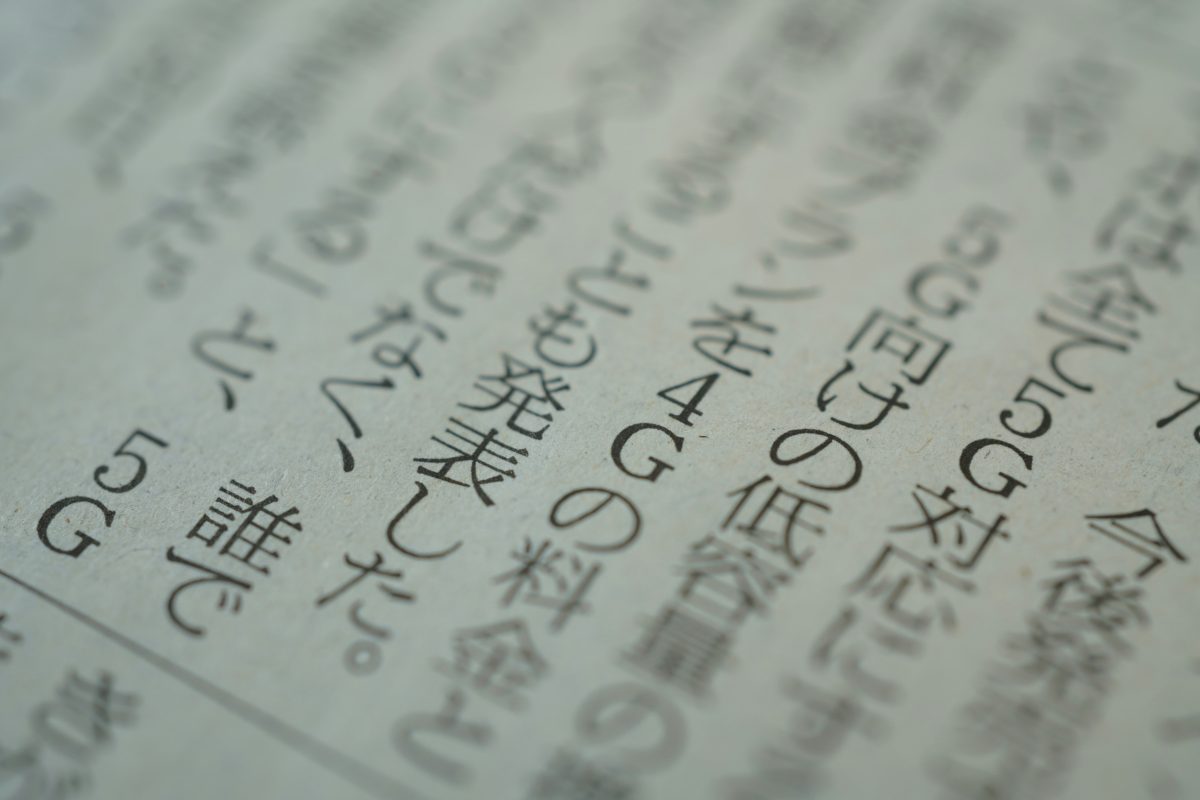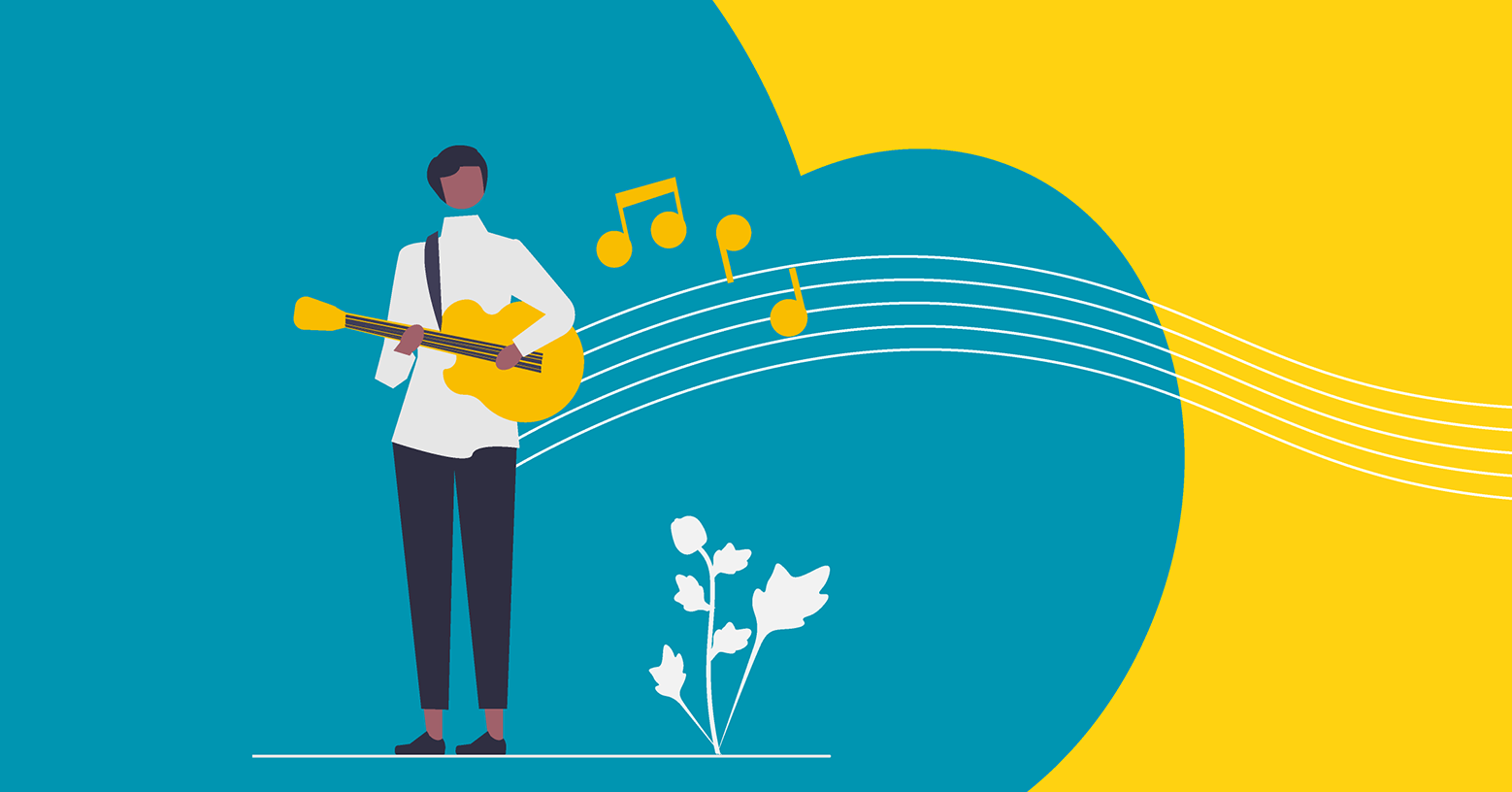
They say music is the “universal language,” but haven’t you ever heard a tune and instinctively felt “that sounds Irish” or “that sounds Japanese”? That might be due to the instruments being used, or the beat that you feel, or something else called the “scale” that the tune is based on. The scale is the selection of tones that are considered usable within an octave, and while some scales span various cultures, others are specific to certain cultures and regions. Whether you’re an aspiring composer or just like to listen to music, knowing your musical scales will help you enjoy your music even more.
Contents
The Basics – Ionian Scale
Before going into the exotic scales that composers use to make their tunes sound a certain way, let’s briefly touch on the basics, the Ionian Scale [1/2/3/4/5/6/7]. Never mind the name, what’s important is that this scale uses the white keys on the keyboard from C to C, or Do/Re/Mi/Fa/So/La/Ti/Do if you prefer. Also known as the C Major Scale, this is the very first scale you’re introduced to when learning piano. Yet another name for it is the Western Major Scale because so many tunes in the western musical tradition use this scale to achieve a bright, happy sound.
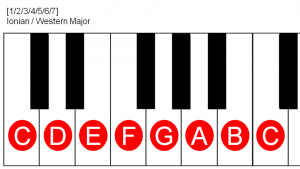
The Irish Sound – Dorian and Mixolydian Scales
Celtic or Gaelic music uses mainly four scales, Ionian, Dorian, Mixolydian and Aeolian. Among these, Dorian and Mixolydian, in combination with certain rhythms, provide an unmistakable Irish sound that anybody would recognize. Among those two, Dorian is the Minor scale where the third tone is flatted [b3] for a “sad” sound, while Mixolydian has a natural third [3] for a “happy” sound.
Here’s the C Dorian Scale [1/2/b3/4/5/6/b7], beginning with C, with a flat third and flat seventh. We’ll be showing all the scales starting with C, for comparative purposes, but please note that you can also play the D Dorian Scale (beginning and ending on D) to avoid any of the black keys and stay on white keys only.
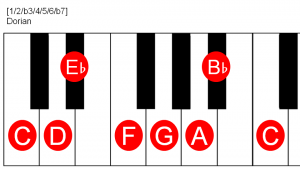
This is an Irish jig in the Dorian scale, called the “Lilting Banshee.”
As you would expect of a minor scale, this fiddle jig features a happy tempo but is at the same time very melancholic. The Dorian Scale also appears in traditional English folk songs like Scarborough Fair.
Now, for a happier sound we turn to the Mixolydian Scale [1/2/3/4/5/6/b7], illustrated in C but also commonly played in other keys depending on the instrument.
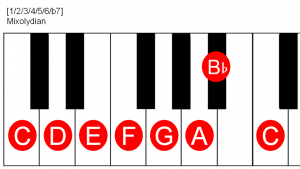
Here’s the Irish jig called “The Moon Coin.”
Tip: You can play the Mixolydian scale using only the white keys on the piano by starting and ending on G.
If you’re looking for a sound that would work well in a folk song, or perhaps composing a background track for a game stage featuring a village with a cast of villagers, Dorian or Mixolydian could be your go-to scale.
The Spanish/Flamenco Sound – Spanish Phrygian Scale
The Spanish Phrygian Scale [1/b2/b3/3/4/5/b6/b7] differs from the Phrygian Scale [1/b2/b3/4/5/b6/b7] in that it adds a natural 3, which if starting with C, would be the E tone.
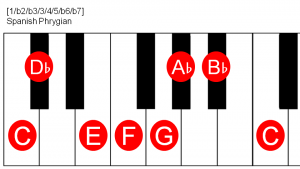
The Phrygian scale is particularly important because it’s the base for virtually all of the various scales that have developed over a broad area spanning the Mediterranean and Middle East, including Freygish, Bayati magam, Jewish, Hijaz-Nahawand and Ahava Rabbah. The Spanish Phrygian, which developed in the Andalusia region of Spain that was at the crossroads of European, Gypsy, Islamic and Jewish cultures, features characteristics of those musical cultures. For a really in-depth look at this wonderful and exotic scale and its history, watch the video The Mystery at the Heart of Flamenco. For a tune that conjures up images of bulls and matadors and Don Quixote, this scale is a must.
The Pump It Sound – Gypsy Scale
Okay, the subtitle was a giveaway. If you’ve ever listened to the Black Eyed Peas megahit “Pump It,” you’ve been exposed to the Gypsy scale [1/b2/3/4/5/b6/7] already.
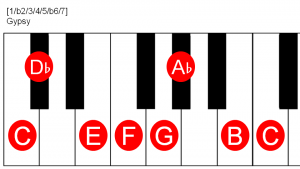
As you may know, that iconic guitar run featured in “Pump It” is actually from the tune “Misirlou” by Dick Dale, but what you may not know is that Dick, “The King of the Surf Guitar,” was of Lebanese descent from his father’s side, which is said to have influenced his playing style. The Gypsy scale is one of those ways to give your tune an exotically cool sound.
The Oriental Sound – Major Pentatonic Scale
A pentatonic scale is comprised of only five tones, so in this case instead of [1/2/3/4/5/6/7] of the major scale, it uses only [1/2/3/5/6], or if based on the key of C, it would be C/D/E/G/A. This scale is used widely throughout Asia, having been strongly influenced by Chinese music.
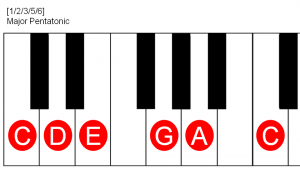
Actually, the original traditional Chinese scale is close to but not equal to the Major Pentatonic scale in that the tones, called gōng (宫), shāng (商), jué (角), zhǐ (徵) and yǔ (羽) don’t exactly match up with the pitches of the “alphabetical” tones that most western listeners are used to, but since traditional Chinese music is performed on traditional Chinese instruments that are tuned accordingly, it doesn’t matter. What’s more important for the purposes of this blog post is that even in the modern era where people in Asia compose music on the piano, the traditional sound has carried over in the form of the Major Pentatonic.
This pentatonic is also used in traditional Korean music, and is called Pyeongjo when starting on G (G/A/C/D/E), and Gyemyonjo when starting on A (A/C/D/E/G, which actually makes it Minor). As an example of the Major Pentatonic, here’s the Korean folk song “Arirang,” which is dear to all Koreans everywhere, north, south, east and west. To create music that shouts “Asia” with a hint of dynastic air, this pentatonic is the sound you need.
Tip: A super-easy way to play the Major Pentatonic is to play ONLY the black keys on the piano. That would give you the Major Pentatonic in G-flat instead of C.
The Japanese Sound – Hirajōshi
Japanese traditional music is based on a variety of musical scales such as Minyō (民謡) [1/b3/4/5/b7], Miyakobushi (都節) [1/b2/4/5/b6], Ritsu (律) [1/2/4/5/6] and others. But the “scale” that has been the most consequential in solidifying the Japanese sound, especially to the western ear, has been Hirajōshi (平調子) [1/2/b3/5/b6].
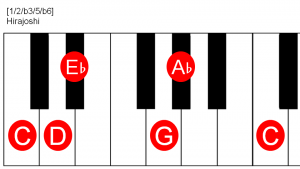
Note that we’re not calling this the “Hirajoshi Scale” as some other articles on the internet might refer to it, because in Japan it’s considered to be a tuning method for the Shamisen and Koto instruments rather than a scale (音階: onkai). But its impact on music from the Edo Period (1603-1867) onward when music became the domain of the common class, as well as current Enka music, is undeniable. Perhaps the most recognizable Hirajōshi tune is “Sakura Sakura,” played here on the 13-string Koto harp.
Another name for Hirajōshi is “Yonanuki Minor Scale,” coming from the fact that the 4 (yon) and 7 (nana) are removed (nuki) from [1/2/b3/5/b6]. If you’re writing tracks for a game that features ninja and samurai action, or calming music to match a serene Japanesque landscape, try leveraging the Hirajōshi or one of the older Japanese scales.
The Okinawan Sound – Ryūkyū Scale
Of course, Okinawa is a Prefecture of Japan, but it has a musical tradition that’s unique, and the Ryūkyū Scale [1/3/4/5/7] they use is also different from the rest of Japan.
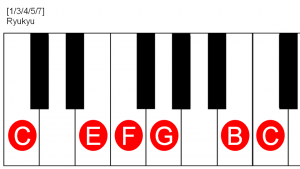
The Okinawan folk song “Tinsagu Nu Hana” is perhaps one of the most famous tunes to feature the unique Ryūkyū scale. The scale’s distinctive charm comes from the gap one feels between the first four notes and the fifth note of this pentatonic, as [1/3/4/5] (C/E/F/G) is basically “Oh when the Saints,” followed by the curve ball in [7](B). For a sound that is both oriental and South Pacific-ish, with a different ring from other Japanese scales, you might want to work in the Ryūkyū Scale.
Language and music are both comprised of a set of sounds that are considered natural in their respective cultures, and have developed over the centuries both in isolation and through interaction with other cultures. Lyrics are obviously an important part of a song, as they tell a story through words that can lift your spirits or break your heart. But those lyrics need to ride on the melody, the rhythm, the cadence, all of which are linked to the sound of the culture. If you’re seriously studying music, you already know this, but if your interest is more recreational, or you’re just starting to write music of your own, understanding the world’s exotic (and not-so-exotic) scales just might help bring you closer to your goals.
Crestec’s own Aki Ito is an avid music fan and musician himself. Check out his YouTube channel to hear him performing in English and Japanese!
Douglass McGowan




